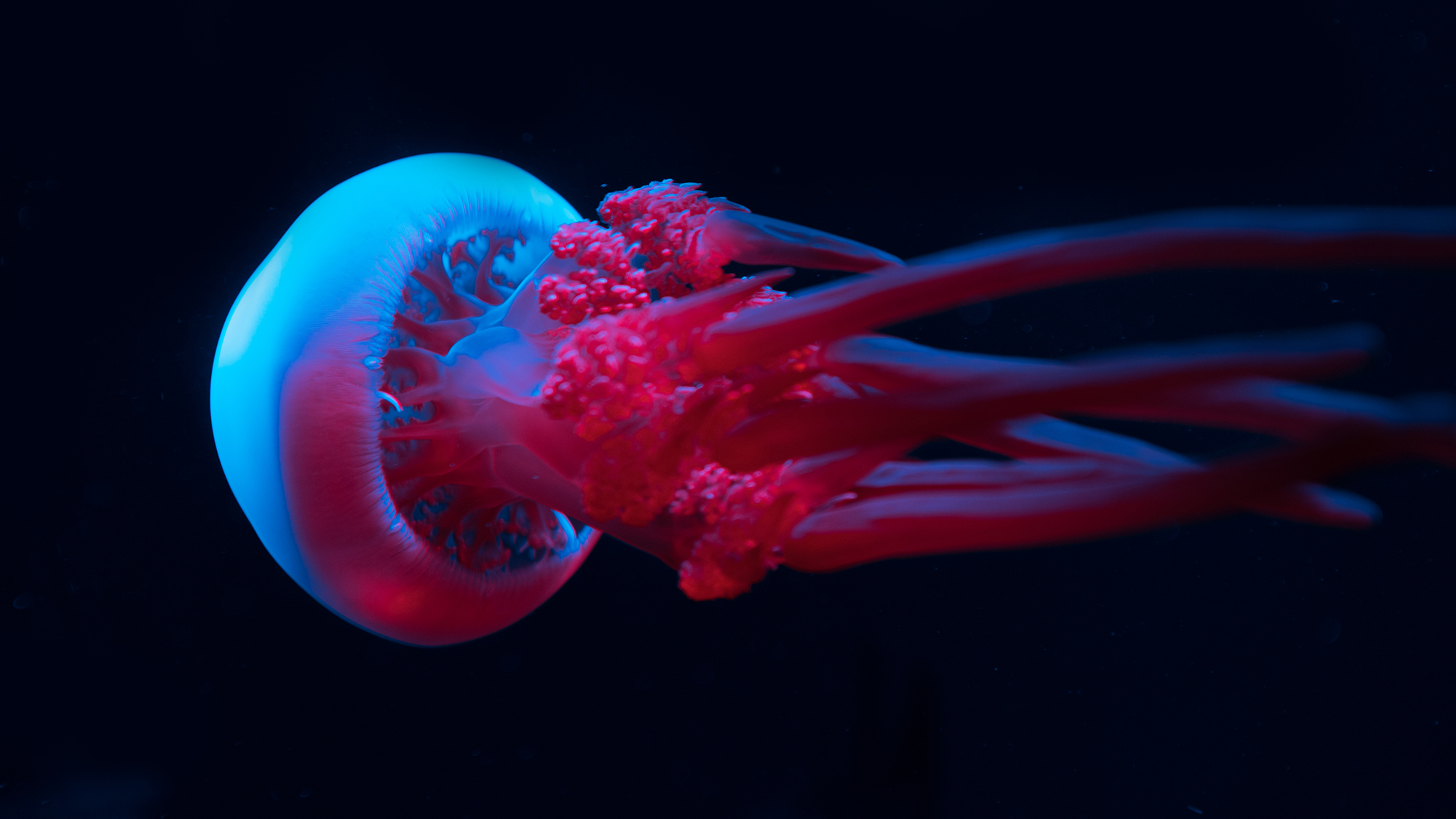

What’s the weirdest thing you learned this week? Well, whatever it is, we promise you’ll have an even weirder answer if you listen to PopSci’s hit podcast. The Weirdest Thing I Learned This Week hits Apple, Spotify, YouTube, and everywhere else you listen to podcasts every-other Wednesday morning. It’s your new favorite source for the strangest science-adjacent facts, figures, and Wikipedia spirals the editors of Popular Science can muster. If you like the stories in this post, we guarantee you’ll love the show.
Fact: Jellyfish can learn from their mistakes even though they have no brains
By Rachel Feltman
Before we can talk about how jellyfish learn, we have to talk about the fact that they have no brains. That probably doesn’t surprise you if you’re thinking of the human brain as the archetype of the organ.
But a brain is really just a cluster of nerve cells that control the body they’re in. Exactly what that cluster looks like can vary a lot, especially among invertebrates, where they’re often very simple structures called ganglia. But most of them have some kind of centralized nerve center. Jellyfish are some of the only animals that lack this structure entirely. Others include sea cucumbers, sea urchins, coral, and other marine creatures known for their deep intellectual pursuits.
In a new study, researchers showed that the Caribbean box jellyfish can actually learn from experience, no brain required. Some scientists say this could mean that individual neurons are capable of learning. To learn more about the experiment—and its implications for our own cognitive abilities—check out this week’s episode.
Fact: Hollywood quicksand peaked in popularity back in the 1960s—but how does the real stuff work?
By Jess Boddy
Quicksand used to be everywhere in movies. It was every 10-year-old’s worst fear in the ’90s. One day you’re just livin life, walkin around, and then BAM!!!!!! Sucked into quicksand, sometimes up to your waist, sometimes ALL THE WAY IN. and we all know the classic instructions: DO NOT MOVE! The more you move, the faster you sink.
And although we may remember quicksand best from movies like The Princess Bride and The Neverending Story, it was actually most popular as a story device back in the 1960s. And as one Slate writer posits, it doesn’t seem like a coincidence that ’60s culture outside of film was steeped in quicksand, too—from the Vietnam war to policies nicknamed “the quicksand model.” And as decades progressed, quicksand fell out of fashion with bell bottoms and tie-dye, though it did persist to scare us all as kids in the ’80s and ’90s.
But does quicksand behave in real life like it does in the movies, making you disappear into the ground in less than a second? If you struggle, do you really sink faster? Listen to this week’s episode to hear the verdict, corroborated by both real-life experience, a Nature study, and the MythBusters.
